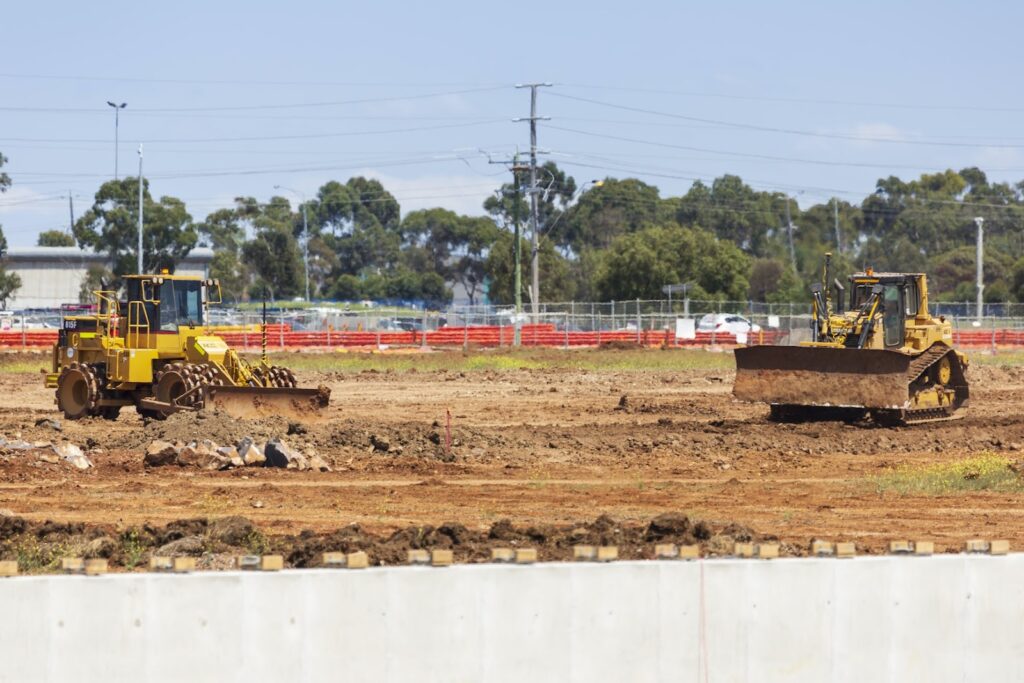What is Bunding and Do I Need it?

Discover why bunding is an essential environmental safety tool for industry. Learn about the types of bunding and how it can help keep your business compliant.
Bunding is used to contain hazardous substances, such as industrial chemicals, by using tanks, containers and floors. It is important in ensuring environmental safety in any workplace, especially in heavy industry. Bunding barriers and containment systems prevent hazardous liquids from spreading or leaking into surrounding areas. This not only helps you meet your environmental obligations but also provides a range of other benefits that can help keep your business safe and compliant. Learn more about bunding, its types and why it’s important for your business here.
What is Bunding?
Bunding is a type of environmental protection that involves the containment of hazardous materials. It is designed to prevent spills and other accidents and reduce the risk of contamination or pollution in the event that a spill does occur. Bunding can be used for any kind of hazardous material, including oil, fuel, chemicals and wastewater.
Types of Bunding
There are several different types of bunds available depending on what needs to be contained and how much space is available.
Bunded Pallets (Bunded Trays)
Bunded pallets (also known as bunded trays) are containers with a built-in secondary barrier around the perimeter to prevent the escape of any liquid or solid contents. This secondary barrier is known as a “bund”, and its purpose is to contain and control any spills, leaks, or drips that may occur during the storage or transportation of potentially hazardous materials.
Floor Bunding
Floor bunding is installed directly on the floor of a facility. It contains special channels that allow liquids to be contained and safely drained away should a spill occur.
Collapsible Bunds (Portable Bunding)
Portable bunding is lightweight, portable and easy to set up when needed. They can be the best bunding application for outdoor use or where there is limited space.
Fuel Bunding
Fuel bunding works in the same way as other forms of bunding but is specifically designed to contain fuel and other flammable liquids.
Tank Bunding
This type of bunding is used for large tanks, including those storing large amounts of fuel or chemicals. It is typically constructed from concrete and designed to contain any spills that may occur.
Concrete Bunding
This is a heavy-duty form of bunding, usually installed permanently in factories or industrial sites. It provides a strong barrier to hazardous liquids, allowing them to be safely contained even if they are accidentally spilled.
Chemical Bunding
This type of bunding is specifically designed for the containment of hazardous chemicals. It usually consists of a tank and containment walls, which are designed to keep any dangerous materials from escaping into the environment.
Benefits of Bunding
Bunding is an important environmental safety measure that helps protect the environment and prevents firewater contamination and accidents. It involves creating a physical barrier around hazardous materials or chemicals to contain any spills that may occur. Bunds are strong enough to withstand pressure from liquids, vapours and solids, as well as able to handle extreme weather conditions.
Protects the Environment
Bunding helps protect the environment by containing any potential spills before they can reach waterways or other sensitive areas.
Prevents Firewater
Another benefit of bunding is its ability to prevent firewater contamination from occurring in industrial settings. Firewater contains hazardous substances such as fuel oils, lubricants and chemicals which can cause significant damage if released into nearby water sources or soil. By using bunds around these materials, companies can help reduce their risk of polluting local ecosystems with dangerous toxins.
Prevents Accidents
Bunding provides additional protection against accidents occurring on-site due to spillages or leakage of hazardous material containers. The use of a physical barrier between workers and potentially harmful substances helps ensure employee safety while also preventing costly clean-up operations.
Follow Australian Standards
Bunding helps businesses follow Australian standards because it ensures that hazardous material is properly contained and managed. This helps companies comply with regulations, reduce their risk of being fined or prosecuted for environmental damage, and maintain a good reputation in the industry.
Get the Right Bunding for Your Business
Ecospill provides a range of quality bunding solutions designed to meet the needs of national industry. With our help, you can ensure your workplace is prepared for any potential spills or leakage and that your business is compliant with Australian standards. Contact us today to learn more about our bunding products and services.
